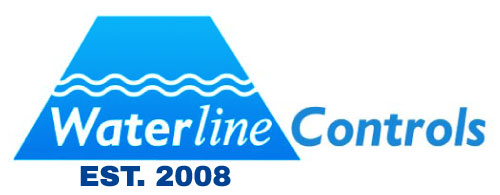What is a Water Pumping Station?
A water pumping station, often referred to as a pump station, is a critical infrastructure component in the distribution of clean water for various purposes, including drinking water, industrial processes, irrigation, and firefighting. Its primary function is to pump and distribute water from a source, such as a well, reservoir, river, or treatment plant, to the local water supply system or other designated locations. Water pumping stations are essential for maintaining adequate water pressure and ensuring a reliable supply of water to communities and facilities. Here are some key features and functions of a typical water pumping station:
Key Components and Functions:
- Pumps: Water pumping stations are equipped with electric, diesel, or other types of pumps designed to lift and transport water from the source to the distribution network. These pumps can vary in size and capacity based on the station’s requirements.
- Suction and Discharge Pipelines: Water is conveyed through a network of suction and discharge pipelines. Suction pipes draw water from the source, while discharge pipes deliver it to the distribution system. Valves and control systems are used to manage the flow and pressure.
- Water Source: The source of water can vary and may include wells, rivers, reservoirs, or treatment plants. The choice of source depends on the location and the quality of the water required.
- Reservoirs or Tanks: Some water pumping stations include storage reservoirs or tanks that serve as intermediate storage to stabilize the flow and pressure in the distribution system. These reservoirs help meet peak demand and provide system redundancy.
- Control and Monitoring Systems: Advanced control systems, sensors, and monitoring equipment are essential to regulate pump operations, maintain desired pressure, and monitor water quality. These systems can be remotely controlled and monitored.
- Emergency Power Supply: Many water pumping stations have backup power sources, such as generators, to ensure continuous operation during power outages or emergencies.
- Water Treatment: In some cases, water pumping stations may include water treatment processes to ensure water quality meets drinking water standards. These treatment processes can include filtration, disinfection, and chemical dosing.
Types of Water Pumping Stations:
- Booster Pumping Stations: These stations are used to increase the pressure of water within a distribution system, ensuring that water reaches all consumers at adequate pressure levels.
- Transfer Pumping Stations: Transfer stations are responsible for moving water from one location to another, such as from a storage reservoir to a distribution system.
- Lift Pumping Stations: Lift stations are primarily used in wastewater systems to lift sewage or wastewater from a lower elevation to a higher one, allowing for gravity-based conveyance.
- Well Pumping Stations: These stations draw water from wells and are commonly used in rural areas or locations where groundwater is the primary water source.
Water pumping stations play a crucial role in maintaining a reliable water supply for residential, industrial, and commercial use. They ensure that communities have access to safe drinking water and support various industrial processes and agriculture. These facilities require regular maintenance and monitoring to ensure the efficient and uninterrupted operation of water distribution systems.
Water pumping stations are devices that can be used to move water from one location to another without the direct involvement of people or animals. These machines may circulate water in treatment systems, supply water to canals, and even drain water from low-lying land.
In these kinds of applications, water pumps are typically only taken into account if simple gravity-based drainage is not an option. It is uncommon to utilize water pumping stations to remove water from high sites because it is frequently more simpler to just dig a canal and allow the water flow naturally downhill to the appropriate gathering area. On the other hand, water pumping stations that transport water to elevated sites are fairly prevalent. Water pumping stations are necessary in this situation because, for instance, residents who live on hillsides must transport the water they use to their homes uphill.
What Function Do Water Pumping Stations Serve?
The pumping station needs to produce enough pressure to drive the water against gravity. When this pressure is reached, there will be sufficient pressure to transfer liquid at the required flow rate. This is a straightforward mathematical equation, and pumps are made to be programmable in order to make changing the water flow rate simple. The necessary data is entered into an electronic controller that is either directly connected to the pumping station itself or controlled from a remote location. The calculation takes into consideration all of the pipes (including their size), new fittings, elevation changes, and any other elements that can have an impact on the water system’s pressure.
When determining the pressure required to overcome the system pressure and start the water flowing, it’s important to take into account the dimensions of the pipe entrance, any directional changes in the piping (such as 45- and 90-degree bends), various types of valves, as well as the dimensions of any outlets along the system. The many qualities of the liquid that is to be pumped must be considered in this computation. Therefore, it’s important to consider the amount of friction that water causes on the piping as well as the roughness factor. Water and other liquids will have very little friction, but sewage and chemicals may be aggressive and require more force to pass through the pipeline.
Regulatory Issues Regarding Water Pumping Stations
Older water pumping stations may be found on many people’s properties in England and Wales, either directly beneath them or nearby. In the past, local governments or private owners constructed these devices. However, in England and Wales, legislation was approved in 2016 that gave local water companies ownership of private pumping stations. There are several outdated pumps that require extensive maintenance. Many of them were constructed during the Victorian era, and some of them are now protected historical landmarks.
The challenge of locating and cataloguing every pumping station in England and Wales is challenging, and surveying work is still being done today. If you have a pumping station on your property, it could be worthwhile to find out if the upkeep is the responsibility of the neighborhood water company.
Risk Reduction Through Water Pumping
Numerous threats to residential, commercial, and industrial sectors can be reduced with the use of water pumps. Lack of pumping causes stagnant water to accumulate in sewer systems, where it can harbor bacteria and diseases. In such a condition, hazardous gasses like hydrogen sulfide can accumulate and pose a serious risk to the populace if ingested. There is little risk of gasses building up as a result of stagnation because sufficient pumping ensures that the raw sewage is moving at a steady flow.
In densely populated places, insufficient pumping can also cause water to surge up from the system and flood basements and ground floors of buildings.
In the United Kingdom, water pumping stations are used to move water along canals, move groundwater, move water for hydraulic power plants, and provide public water supply and sewage services.
Why Choose Water Line Controls
All of our water level controls and water level control systems are assembled right here in the U.S.A. where we monitor every step of the process.

